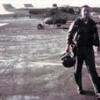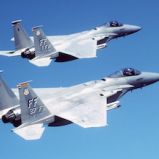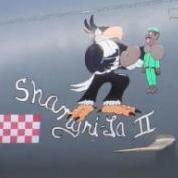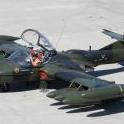Leaderboard
Popular Content
Showing content with the highest reputation on 09/04/2016 in all areas
-
4 points
-
Hey WayUp, while I appreciate the effort to keep your bro in line (though you're too late to keep his post from getting kinetically posted in the U-2 bar), there are some other issues here: - You want the CAF to wait until the GH is ready to get the party started? What if there's icing? Or weather? Or Satcom jamming? Or an IADS? Or a credible cyber threat? The GH won't be operating for very long in those cases. The CAF fights with or without you because they shouldn't need a handful of "special" jets (including the U-2) to make the mission happen. The job of both our airframes is to enhance their fight (in different ways) without introducing chaff. - While on one hand you believe the CAF needs you, you also don't care if you get shot down. You want to use GHs as SA-XX sponges, go ahead, but at least remove the expensive parts first; the U-2 would be glad to have more spare ASIP bits for test and training. Joking aside, there's a bigger problem here. GH operators really don't seem to care as much about their jets as their manned counterparts, and that's a problem for more than just them. I've watched them on multiple occasions not really GAF about their own buffoonery and equipment malfunctions even when they physically threaten the safety of others. As for why, my personal opinion is that millions of years of human evolution makes people just not care that much when they're not physically co-located with a jet or operation. - "...multiple times in the last year where the RQ-4 was more reliable and capable than the U-2..." I'll go ahead and call bullshit if you're referring to operational missions; if you're referring to how we did with a cobbed together jet in 16-1 I'll acknowledge that our stateside Ops-MX-DGS-CFSR team underperformed. 16-3 was pretty good, though, and I know of at least a couple pretty important Ex events this year where you guys were completely unable due to WX or equipment. - "...it's not a secret that we can replace the U-2 in what it does." Make no mistake, the GH will never be able to replicate what the U-2 can do. The U-2 has twice the thrust and electricity, which means it can haul more powerful sensors (particularly the radar kind) higher and faster that a GH ever will. And it'll do it in kinetically and electromagnetically contested airspace with a co-located pilot and a kickass defensive system. The GH's big programmatic mistake is that it's still trying to be a U-2 replacement. It will always fall short of that due to the above reasons, so the program relies on NG's political donations and book-cooking to get continued funding. Where it could really shine, and make itself much more useful than it currently is, is enhancing and expanding the BACN role. A bunch of networked GHs flying around outside of threat rings relaying IP-data is where the money could really be at. And as SAM sponges.2 points
-
Good words to the young guys who ask "why are all the pilots quitting...you have the best job in the world."1 point
-
Anyone else read this? Replace the Navy speak with AF speak, and it represents the fighter community well. https://fightersweep.com/6171/is-naval-aviation-culture-dead/1 point
-
Peoples priorities change. What I would have killed for 8 years ago, just doesn't interest me anymore. Time gives people perspective.1 point
-
The fighter pilot shortage is real, but the shortfall could be significantly reduced IMHO if the AF did an honest scrub of fighter requirements. And I'm talking about requirements going away, not getting transferred to another AFSC. NAF-level Stan/Eval shops for example...what would you say they do here... In my experience, they just duplicated effort and got in the way. My staff job as an 11F was training Joint Operations Center staffs around the world....completely unrelated to my AFSC and something I had no prior experience doing -- total waste of 22 months. And overseas deployed billets that "require fighter pilot experience" frequently don't. Kill all those worthless 'requirements' and we might close the gap on the shortfall a bit.1 point
-
How are the fighter squadrons going to find tails to fly a bunch of crossflow guys? Weren't absorption rates the reason we TAMI'd people out of that community? Nine years later we now have the cockpits to get pilots the right mix of experience to upgrade in a reasonable manner? I also don't see the MAF getting the right pilots either. Flying ability is not something the MAF has cared about or quantified in your records. Your Christmas party planners may have a leg up on this over the guys out hacking the mission.1 point
-
The article doesn't mention the fact that the upgrades are for both C-models and E-models as they move to a common OFP. So while the author focuses on air-to-air, there are key capabilities coming with the improved hardware and software for the air-to-ground role.1 point
-
In most cases it probably would be better, IF it does what you need and you can afford it. Although I could be accused of being a bit biased after 50 years in the AF recce business (25 with with the U-2 program), I really don't think I am. The GH is a great little aircraft ("little" mostly referring to size, weight, and power) and I think the Teledyne Ryan and Northrop Grumman people did a pretty good designing and building it considering the political constraints they were working under. Can you imagine what a prime would wind up with if a new program started out with "Build us a new fighter-bomber, make it unmanned, and make it cost less than $25 million, and it doesn't have to do anything specific as long as it stays under $25 mil a copy." The problem with the GH as an operational ISR platform is that no one ever went to the operator or user, and asked what they needed, and turned them into system requirements. Virtually every suggested capability in the original ARPA CONOP was left out because the UFP limit precluded adding them to the design (things like effective sensors...no SIGINT at all, no off-track EO/IR (LOROP), no ability to switch sensors to meet mission needs, no self-protection systems, no significant O&M savings (some people talk about lower flying hour costs, but they aren't much lower per hour, and it flies nearly 100 Kts slower than the U-2 so you use up more hours coming and going!), and no ability to deal with high threat areas. Of course, that last one isn't the GH's fault...remember, the HAE CONOPS was supposed to include two vehicles. The DarkStar was cancelled and it was the segment that was supposed to handle the "...economical solution to theater commanders RSTA needs---near-real time reconnaissance capability against high-value, well-defended targets." So, unmanned is good in many cases; unmanned with no capability and no budget to support it isn't!1 point
-
A valid question; here's my opinion based on my involvement as an AF O-6 at NSA working airborne programs for the Asst Dep Director for Operations, Military Affairs and post- retirement as a civilian in OSD (DARO, OUSD/ISR, and NIMA/NGA)at the time The answer is that in the very early 90s, Bill Lynn, the Director of DARPA (actually named "ARPA" at that point but returned to its original title of "DARPA" later in the 90s), and Bill Perry, the DepSecDef (not sure if they were in those exact positions in the very beginning, but by mid-90s they were) believed that unmanned aircraft had the potential to revolutionize airborne operations, starting with ISR, by reducing personal exposure to threats, enabling extended ISR (long duration ops) and save money by reducing the manpower costs in the systems. Additionally, they believed that a new acquisition concept called the Advanced Concept Technology Demonstration (ACTD) could speed up the introduction of new systems from the current (in the 90s) and painful 15-20 years. The idea was to marry up the contractor side and the government side early in the development cycle to better work out operational issues while designing the vehicles (sounds good...didn't work!). They married the two ideas and DARPA initiated the High Altitude Endurance (HAE) and Medium Altitude Endurance (MAE) programs in 1994. The HAE program envisioned two platforms; a high altitude "U-2-like" vehicle and a smaller low observable, craft for better penetration of highly defended areas, referred to as "tier 2+ and "Tier 3-" in their concept terminology. The MAE program started with an existing much less capable unmanned RPA called the "Gnat", built by General Atomics for another purpose. You'll note here that this effort was a DARPA technology development effort, not an acquisition effort responding to an approved DoD mission need. In fact, the Air Force was not particularly enamored with the idea of unmanned mission aircraft and did not support the effort; there was no AF money or manning in the POM to support it. In fact the HAE program plan itself says there is only one required outcome...and let me quote from the ARPA 6 Oct 1994 ver 1.0 HAE CONOP..."A dominant objective of the HAE UAV program is to obtain the maximum capability possible for a set, non-waiverable Unit Flyaway Price (UFP); accordingly, while there are performance objectives, the only requirement that must be met is the UFP." In other words, it doesn't have to do anything except fly, hold a camera, and cost less that $10 million a copy; no operational needs have to be satisfied. To many in the system, the real effort was for DARPA to develop the new acquisition concept, using the HAE and MAE as exemplars. The AF eventually got the aircraft because the outcome of an ACTD was to be either: 1) a failed program, so cancel it, 2) showed promise, so move on and correct issues, or 3) Provide program residuals to the eventual user (AF in this case) for them to decide to either keep and operate or dump. The ARPA and SECDEF seniors decided it flew, collected something, and (sort of) met the UFP goal (at about $15.5 each), so they chose option 3 and passed it all to the AF (both HAE and MAE, although the DarkStar segment of HAE was cancelled after it crashed on flight 2. Why they kept it was the usual case of political and industrial influence, I guess. Some of us suggested the best course of action was to dump the Global Hawk because it met few operational needs, would cost too much to upgrade (if it could ever be upgraded...too little space, too little power, too little payload), and met few of the original desired capabilities, We felt it would be cheaper to take the money and start with a clean sheet design, using the knowledge gained to drive the new (unmanned) platform (which we referred to as "Global Truck"). The estimated $200-400 million extra was consider too much money by leadership, so we stay on the "cheap" track...which I suspect has cost us an extra $5-8 Billion by now (just my guess). As for the ACTD experiment, it hit a few bumps, too. When the Predator program was turned over to the AF and told to operate it, they found the DARPA program provided no money or manpower in the DoD budget to do so, no tech data was ever developed for the Service (it was all contractor proprietary) so they couldn't fix it, no ground control systems built except the contractor's test stuff so they couldn't deploy or fly it fly, No additional money was provided by DoD or Congress to the AF so the AF started a program called "Predator 911" to find money (to operate and buy support) and manpower, and facilities, "robbing" it from the current and future years budgets, causing major disruptions for years. As for GH, the idea of killing the U-2 and replacing it with the GH didn't float either, because the GH had practically no operational capability as delivered and it took a decade to develop the RQ-4B with more capability and slightly better sensors. So, that's why we have it! BTW, as far as Perry and Lynn were concerned, the success of unmanned systems since then probably indicates their vision was a success, and I can't really argue that they'd be wrong. Its all in your perspective.1 point
-
LOL. I'm just quoting this in case Iowa decides to delete it so other people can enjoy.1 point
-
...deleted.... Screw it, not worth the effort on an internet forum. Enjoy the Gobble Cock kool aid, iowa.1 point
-
You should probably spend some time with some knowledgeable tactics and/or intel folks at your unit. They might be able to straighten out a few of your misperceptions. Do us all a favor and do that in a vault or SCIF and keep it off an internet forum please. Thanks.1 point
-
1 point
-
Perhaps not. Come to the AOC, it'll open up a whole new world for ya... The MAF literally doesn't know what it's missing. Literally. As in - the MAF is clownshoes compared to how the CAF thinks about, plans for, trains to, and then executes the mission of the USAF. That's the reason the MAF needs WOs. The future is integrated.... the (insert scoff here) "we're the MAF, we're different" garbage doesn't work anymore. Chuck1 point
-
-1 points
-
This thread is in response to all the healthy discussion on an unrelated thread not about the RQ-4, so now there is a thread just for the GH. Hopefully this will help my community fight two battles, the battle to be embraced by big Air Force so we can showcase our capability and the battle to address concerns that we have no capability at all, aka U2 vs RQ-4. So, we would love to integrate in a more meaningful way at Red Flag and tap into our Intel Patch's talent...As it was explained to me, the billet for an organic intel officer was established within the last year. I assume there is an Patch wearer on base but there isn't one in our squadron after former SQ/CC left. I'm relatively new to the squadron so I don't have all the info, and hopefully some other guys will jump in and provide it. What I do recognize is we have NOT demonstrated a commanding capability that cannot be ignored by Nellis...and hence we have been ignored. Maybe we need to work on ourselves before we fight at the big kids table, or maybe we get some more support and we all get better together. #thedream As far as the U2 goes, how do you have an ISR capability fight that is unclass... As a start though, sensor parity seems an inevitable certainty from the simple fact that there is no physical/electrical/aero reason it can't be. Northrup Grumman is going to do the leg work to make it happen, they have a vested interest to do so. There isn't parity now, which is why we keep the U2. Good, our Intel is better because of it, but someday we will have parity and arguing about when that day will be here is boring. My guess is 3 years cause that is what I read on CNN. As far as old fashioned pilotage exploiting U2 capability...you are right, I am not aware of what you are talking about. But I will clarify that every 11X in the Air Force is part pilot part mission manager, your Qual check proves you can pilot, your MSN check proves you can manage. In the RQ-4 you can pass your qual check if on your engine out EP you don't touch anything and just make the appropriate radio calls (phone calls if MCE only ;) Hence a Global Hawk pilot is really a mission manager and not a pilot in my framework...it is semantics. Someday an 18X or even perhaps a Enlisted pilot will use good ol'fashioned mission management skills to exploit superior HAISR capability to that of U2, if only because they can do it at a desk and not in a space suit worrying about stall speeds and that SA-2. List of current shortfalls...cough...quibbling Sensor Parity, Dynamic Inflight routing w/ weather radar (significant software update and minor hardware), reliance on GPS/Satellites I'm tired so if someone else wants to join in we can talk about enlisted pilots too. And I haven't even mentioned all the things that make the GH superior to the U2 so hopefully this thread gets some discussion going.-1 points








